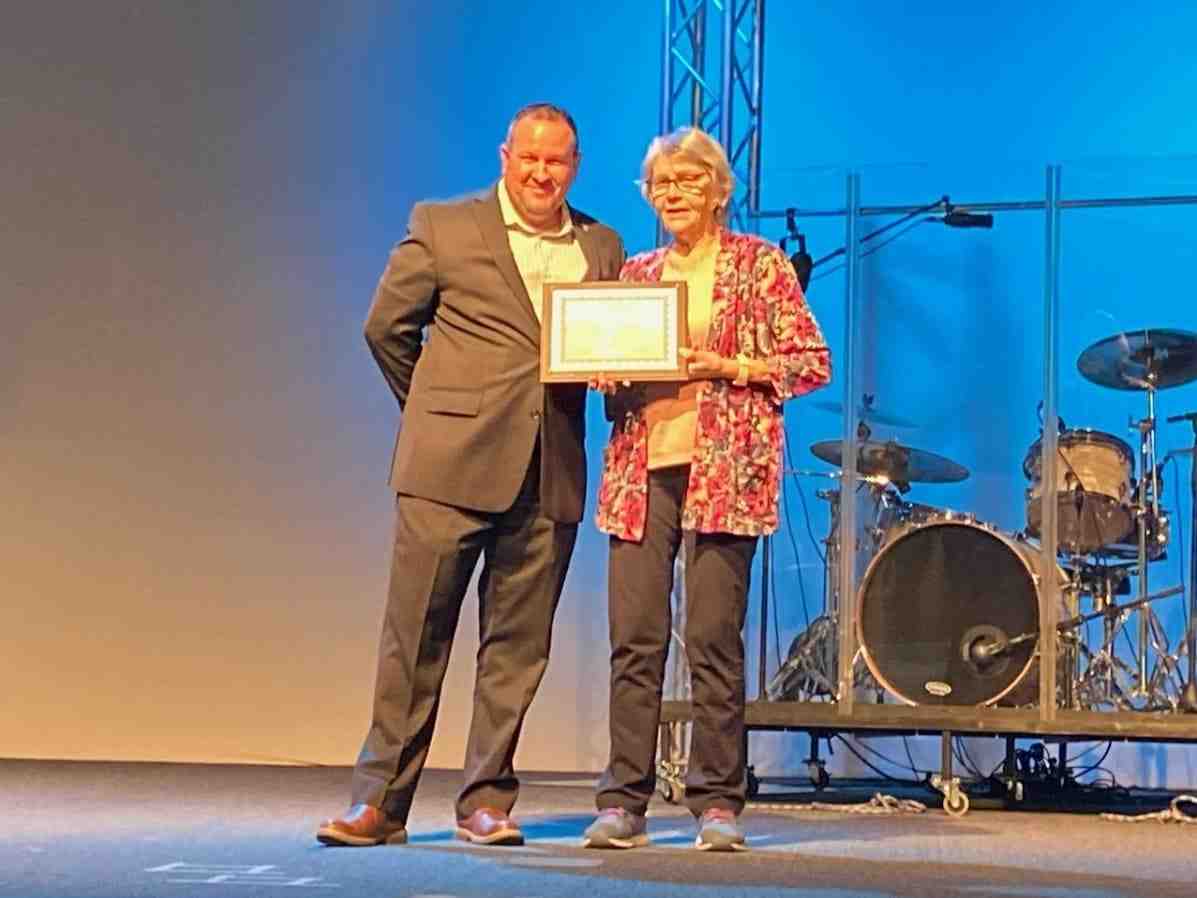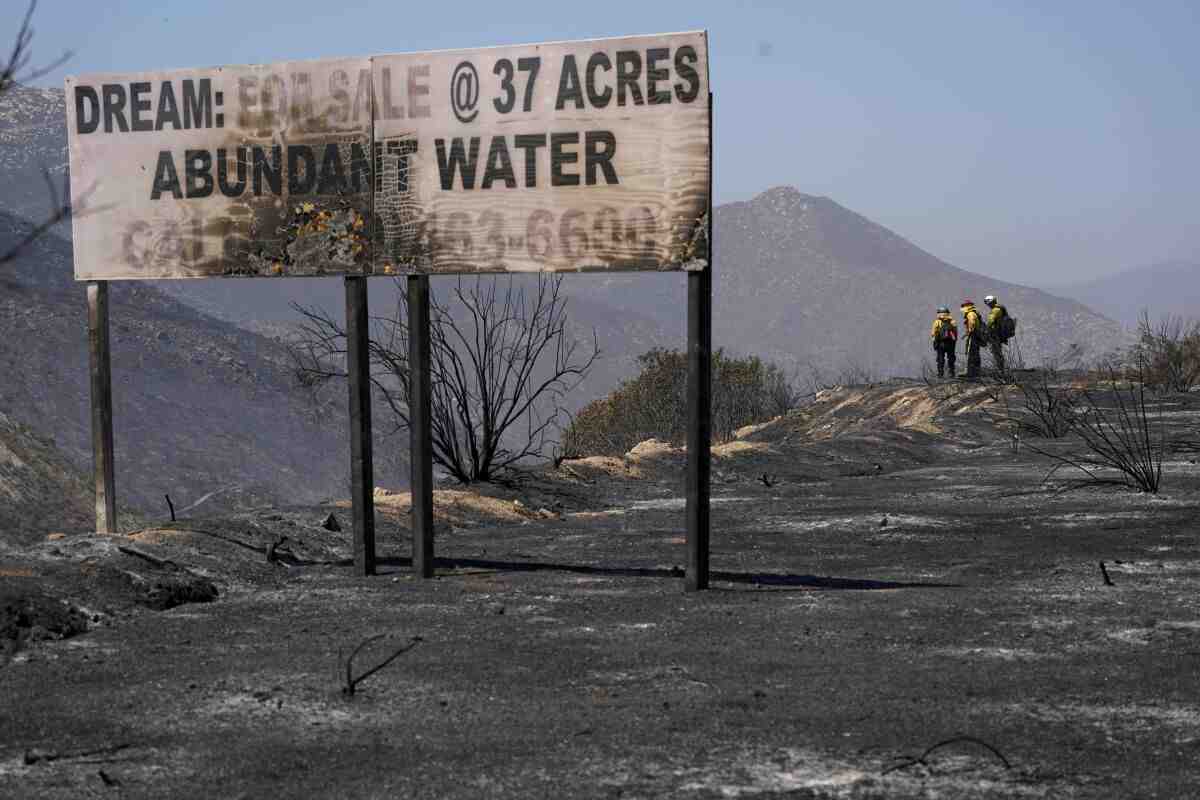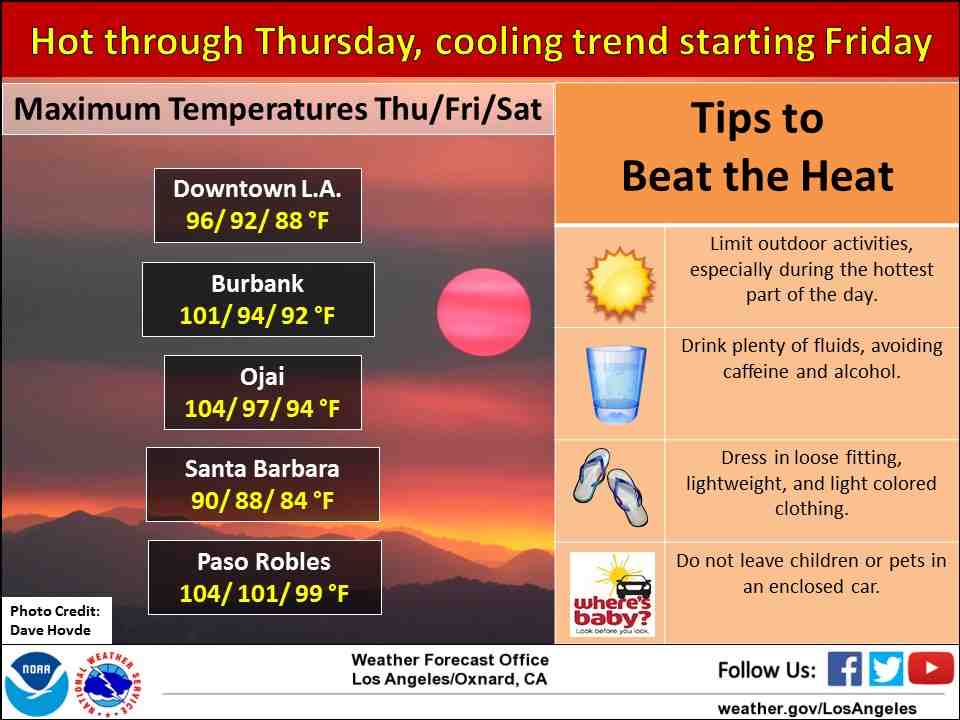ENCINITAS, CA — An excessive heat warning and heat advisory are in place for parts of San Diego County as another heatwave hits the region.
A heat warning is in effect until 11 p.m. Tuesday for the County Deserts. Dangerously hot conditions are expected in the desert areas, with temperatures reaching 110 degrees, according to the National Weather Service.
A heat warning is in effect until 8 p.m. Wednesday for the coastal areas and valleys of the county, including Encinitas. Temperatures of up to 90 degrees are expected in the coastal areas, while temperatures of up to 104 degrees are forecast in the valleys, the NWS said.
Find out what’s happening in Encinitaswith free, real-time updates from Patch.

Hot weather can increase the potential for heat-related illnesses, especially for those who work or participate in outdoor activities.
Forecasters advised people to drink plenty of fluids, stay in air-conditioned rooms, stay out of the sun and check on relatives and neighbors. Weather officials also reminded residents that small children and pets should never be left unattended in vehicles.
Find out what’s happening in Encinitaswith free, real-time updates from Patch.

“Know the signs and symptoms of heat exhaustion and heat stroke,” advised the NWS. “Anyone overwhelmed by heat should be moved to a cool and shady place. Heat stroke is an emergency! Call 911.”
The rules of replying:
What fabric is coolest in summer?

What are the 9 best summer fabrics?
- Cotton. Cotton is one of the best fabrics for summer and hot weather. …
- Linen. Linen is another top choice for a breathable fabric that can be worn in hot weather. …
- district. …
- Denim/chambray. …
- Polyester. …
- Nylon. …
- Silk. …
- micromodal.
What is the coolest fabric? Material: Most sleep experts we spoke to agreed that sheets made from natural fibers like cotton and linen are the best choice for sweaty sleepers because they’re the most breathable (and therefore cooling). When it comes to cotton, the weave of a fabric is also important.
What should you not do during a heat wave?

Don’t drink alcohol, sugary sodas, coffee, energy drinks or other caffeinated beverages as they will dehydrate you! That’s the last thing you need during a heat wave. Eat small meals and eat more often. Eat foods with nutrients (not empty carbs) and also foods with a higher water content (fruits and vegetables).
Should you stay indoors during a heatwave? Keep rooms in the house as cool as possible by closing blinds and curtains to keep the sun out, and only open windows when it’s cool enough outside. If possible, retire to a cooler room, especially for sleeping. Drink plenty of fluids and avoid excessive alcohol consumption.
Should you stay inside during a heat advisory?

Stay cool indoors: Stay in an air-conditioned place as much as possible. Wear appropriate clothing: choose light, light-colored, and loose-fitting clothing. Do not use an electric fan when the indoor air temperature is over 30°C.
Is it okay to go outside during a heat warning? If you must be outside, reduce exposure to heat. Limit outdoor activities to mornings and evenings. Reduce your training. If you must exercise, drink two to four glasses of cool, non-alcoholic fluids every hour.
Can you refuse to work if to hot?
There is no law for the maximum working temperature or when it is too hot to work. Employers must comply with workplace health and safety laws including: Maintaining the temperature at a comfortable level, sometimes referred to as thermal comfort. ensure clean and fresh air.
What temperature is too hot for employees? The permissible heat level must not exceed 77 degrees Fahrenheit. “Moderate work” is defined as exertion of 200-350 kcal/hr, which may include moderate lifting and pressing. Its allowable heat level is 80 degrees Fahrenheit.
Whats the hottest you can legally work in?
The OSHA recommendations for workplace air treatment establish federal standards for temperature and humidity levels. Regardless of company size, the minimum temperature for indoor workspaces is 68 degrees Fahrenheit and the maximum temperature is 76 degrees Fahrenheit.
What temperature is too hot for OSHA?
| workload | Limit for unacclimatized workers (intervention limit) | Acclimated worker limit (limit) |
|---|---|---|
| light | 28°C (82.4°F) | 30°C (86°F) |
| Moderate | 25°C (77°F) | 28°C (82.4°F) |
| Difficult | 23°C (73.4°F) | 26°C (78.8°F) |
| Very difficult | 21°C (69.8°F) | 25°C (77°F) |
Is 90 degrees too hot to work?
US occupational safety standards warn that workers are subject to heat stress when the heat index reaches 91 degrees Fahrenheit (32.8 degrees Celsius) or more.







